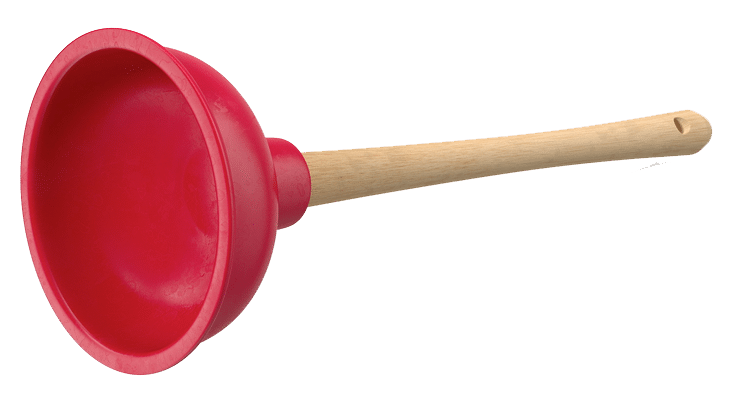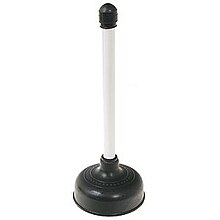Successful Plungers and Drain Cleaner Techniques: Best Practices
Successful Plungers and Drain Cleaner Techniques: Best Practices
Blog Article
We've noticed this article pertaining to A Guide to Plungers (and How to Use Them) down the page on the net and felt it made good sense to talk about it with you here.

Introduction
Correct maintenance of home drains pipes is necessary for preventing blockages and making certain smooth water flow. Among the trick tools in every house owner's toolkit is the bettor, along with numerous drain cleaners designed to take on stubborn clogs efficiently. This post explores just how to make use of bettors and drainpipe cleansers efficiently to maintain your drains moving easily.
Section 1: Comprehending Bettors
Types of Plungers
There are a number of sorts of plungers readily available, each designed for different sorts of drains and blocks. One of the most usual kinds include cup bettors, flange plungers, and accordion bettors.
How Plungers Work
Plungers service the concept of developing stress and suction to dislodge clogs. When correctly applied over a drain, they create a vacuum that can pull out debris or break up blockages.
Choosing the Right Bettor
Picking the appropriate bettor relies on the kind of drain and the nature of the clog. Cup bettors are ideal for sinks and bathtubs, while flange bettors are better suited for commodes as a result of their style.
Common Blunders with Bettors
Preventing these mistakes makes certain efficient plunging: improper seal around the drainpipe, inadequate force, and unclear surrounding particles.
Section 2: Making Use Of Plungers Successfully
Preparation
Before diving, make sure the bettor covers the drain entirely and develops a limited seal. Clear any kind of visible particles around the drainpipe opening.
Method
Start with mild diving motions to develop suction. Increase stress gradually, utilizing a consistent rhythm. Repeat as essential until the drain gets rid of.
Troubleshooting Tips
If diving doesn't work, attempt adjusting the seal, applying oil jelly for a far better seal, or making use of a various kind of plunger.
Area 3: Comprehending Drain Cleaners
Sorts Of Drain Cleaners
Drain pipes cleaners can be chemical or chemical. Chemical cleaners use solid chemicals to dissolve blockages, while enzymatic cleansers use all-natural enzymes to break down organic matter.
Just How Drain Cleansers Work
Chemical cleaners respond with clogs to liquify them, while enzymatic cleaners break down natural materials like hair and grease without damaging pipes.
Security Factors to consider
Constantly wear handwear covers and eye protection when using chemical drain cleansers. Make certain sufficient air flow and comply with manufacturer directions thoroughly.
Eco-Friendly Alternatives
Consider utilizing vinegar and baking soda or enzyme-based cleansers for green options that are much safer for pipelines and the atmosphere.
Area 4: Making Use Of Drain Cleansers Effectively
Application Techniques
Put chemical cleansers straight into the drain opening. Enable them to benefit the advised time before flushing with hot water. Enzymatic cleansers should rest over night.
Precautions
Avoid blending different types of cleaners, as this can produce hazardous fumes. Never ever use chemical cleaners along with a plunger, as splashing can take place.
Dealing With Stubborn Blockages
For relentless clogs, consider using a plumbing snake or calling a specialist plumber to prevent damages to pipelines.
Final thought
To conclude, understanding how to make use of bettors and drain cleansers successfully is necessary for preserving healthy pipes systems. By choosing the right devices and techniques, homeowners can deal with minor blockages and prevent significant plumbing problems down the line.
5 Steps on How to Use a Plunger Effectively
Creating a Seal: Place the rubber cup of the plunger firmly over the toilet drain hole to create an airtight seal. This seal is crucial to prevent air from escaping and ensure effective plunging.
Plunge Gently: Gently press the plunger down to compress the air inside without causing splashing. This careful action sets the stage for effective unclogging without creating a mess.
Maintaining Pressure: Consistently apply pressure to the plunger while pushing and pulling it up and down. This sustained pressure generates the force needed to dislodge the clog.
Breaking the Clog: Continue plunging until you feel the clog release. Look for the water to start draining, indicating successful removal of the blockage.
Flushing and Cleaning: After clearing the clog, flush the toilet to confirm it's working properly. Clean the plunger with warm, soapy water and disinfect it for future use to maintain hygiene.
Additional Tips on How to Correctly Use a Plunger
if you encounter resistance, add some water to the bowl to create better suction;
check the plunger for any rubber cracks to ensure it's in good condition;
exercise patience and persistence, as certain clogs might need multiple attempts.
Mistakes to Avoid when Using Toilet Plunger
avoid using excessive force, as it may damage the toilet;
don't rush the process; take your time to ensure a proper seal and pressure;
never use a plunger if you've recently used chemical drain cleaners
Conclusion
Mastering the art of how to properly use a plunger is a valuable skill for every homeowner. By employing the correct techniques, you can effectively address clogs and ensure your toilet functions smoothly. Patience, persistence, and proactive in maintaining your plunger's hygiene are key to success in this endeavor.
Armed with these skills and principles, you can confidently handle plumbing issues as they arise, promoting a well-functioning and hygienic home environment.
https://homealliance.com/blogs/how-to-effectively-use-a-plunger-the-ultimate-guide

Application Techniques
Put chemical cleansers straight into the drain opening. Enable them to benefit the advised time before flushing with hot water. Enzymatic cleansers should rest over night.
Precautions
Avoid blending different types of cleaners, as this can produce hazardous fumes. Never ever use chemical cleaners along with a plunger, as splashing can take place.
Dealing With Stubborn Blockages
For relentless clogs, consider using a plumbing snake or calling a specialist plumber to prevent damages to pipelines.
Final thought
To conclude, understanding how to make use of bettors and drain cleansers successfully is necessary for preserving healthy pipes systems. By choosing the right devices and techniques, homeowners can deal with minor blockages and prevent significant plumbing problems down the line.
5 Steps on How to Use a Plunger Effectively
Creating a Seal: Place the rubber cup of the plunger firmly over the toilet drain hole to create an airtight seal. This seal is crucial to prevent air from escaping and ensure effective plunging. Plunge Gently: Gently press the plunger down to compress the air inside without causing splashing. This careful action sets the stage for effective unclogging without creating a mess. Maintaining Pressure: Consistently apply pressure to the plunger while pushing and pulling it up and down. This sustained pressure generates the force needed to dislodge the clog. Breaking the Clog: Continue plunging until you feel the clog release. Look for the water to start draining, indicating successful removal of the blockage. Flushing and Cleaning: After clearing the clog, flush the toilet to confirm it's working properly. Clean the plunger with warm, soapy water and disinfect it for future use to maintain hygiene. Additional Tips on How to Correctly Use a Plunger
if you encounter resistance, add some water to the bowl to create better suction; check the plunger for any rubber cracks to ensure it's in good condition; exercise patience and persistence, as certain clogs might need multiple attempts. Mistakes to Avoid when Using Toilet Plunger
avoid using excessive force, as it may damage the toilet; don't rush the process; take your time to ensure a proper seal and pressure; never use a plunger if you've recently used chemical drain cleaners Conclusion
Mastering the art of how to properly use a plunger is a valuable skill for every homeowner. By employing the correct techniques, you can effectively address clogs and ensure your toilet functions smoothly. Patience, persistence, and proactive in maintaining your plunger's hygiene are key to success in this endeavor.
Armed with these skills and principles, you can confidently handle plumbing issues as they arise, promoting a well-functioning and hygienic home environment.
https://homealliance.com/blogs/how-to-effectively-use-a-plunger-the-ultimate-guide

We were guided to that article on Here's How to Correctly Use a Toilet Plunger from an associate on a different blog. Those who appreciated our article kindly make sure you remember to pass it around. We value your readership.
Book With Us Today! Report this page